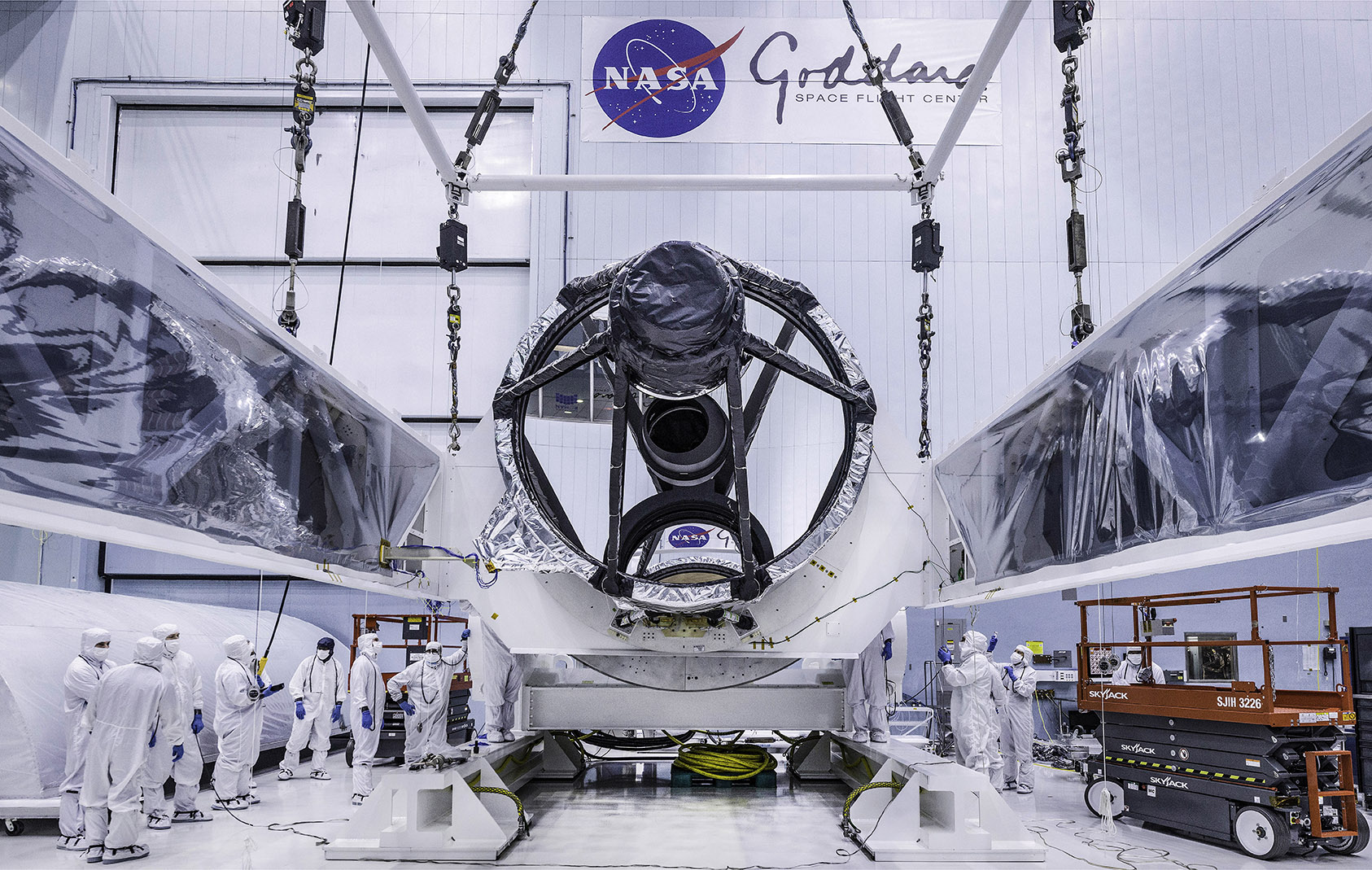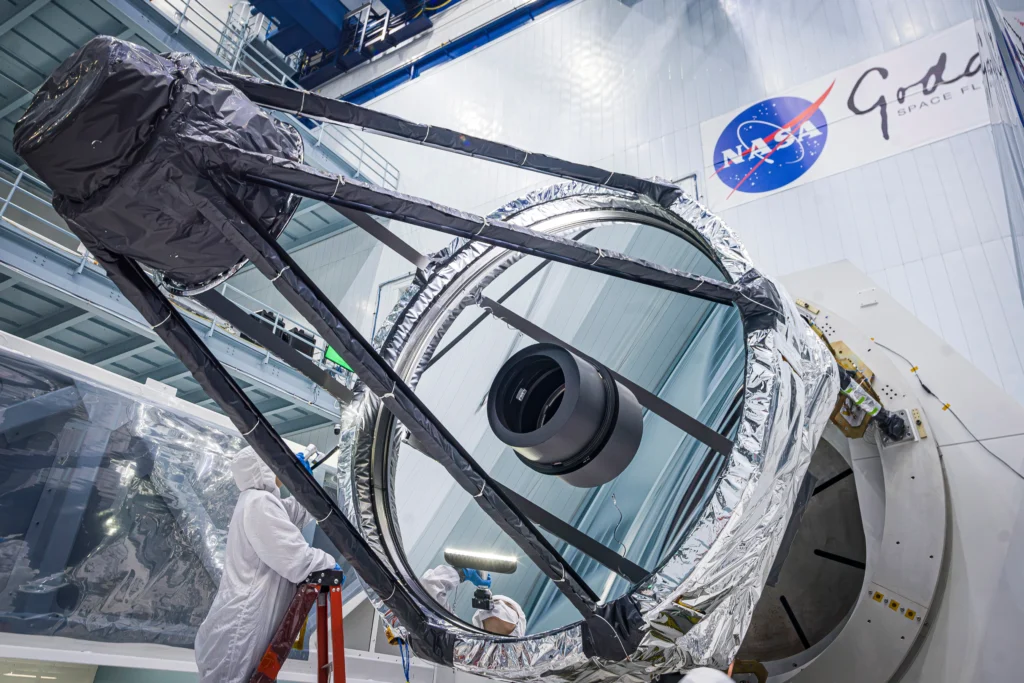Telescope for Roman Mission Complete, Delivered to Goddard

NASA’s Nancy Grace Roman Space Telescope is one giant step closer to unlocking the mysteries of the universe. The mission has now received its final major delivery: the Optical Telescope Assembly, which includes a 7.9-foot (2.4-meter) primary mirror, nine additional mirrors, and supporting structures and electronics. The assembly was delivered Nov. 7. to the largest clean room at NASA’s Goddard Space Flight Center in Greenbelt, Maryland, where the observatory is being built.
The telescope will focus cosmic light and send it to Roman’s instruments, revealing many billions of objects strewn throughout space and time. Using the mission’s Wide Field Instrument, a 300-megapixel infrared camera, astronomers will survey the cosmos all the way from the outskirts of our solar system toward the edge of the observable universe. Scientists will use Roman’s Coronagraph Instrument to test new technologies for dimming host stars to image planets and dusty disks around them in far better detail than ever before.
“We have a top-notch telescope that’s well aligned and has great optical performance at the cold temperatures it will see in space,” said Bente Eegholm, optics lead for Roman’s Optical Telescope Assembly at NASA Goddard. “I am now looking forward to the next phase where the telescope and instruments will be put together to form the Roman observatory.”

Designed and built by L3Harris Technologies in Rochester, New York, the assembly incorporates key optics (including the primary mirror) that were made available to NASA by the National Reconnaissance Office. The team at L3Harris then reshaped the mirror and built upon the inherited hardware to ensure it would meet Roman’s specifications for expansive, sensitive infrared observations.
“The telescope will be the foundation of all of the science Roman will do, so its design and performance are among the largest factors in the mission’s survey capability,” said Josh Abel, lead Optical Telescope Assembly systems engineer at NASA Goddard.
